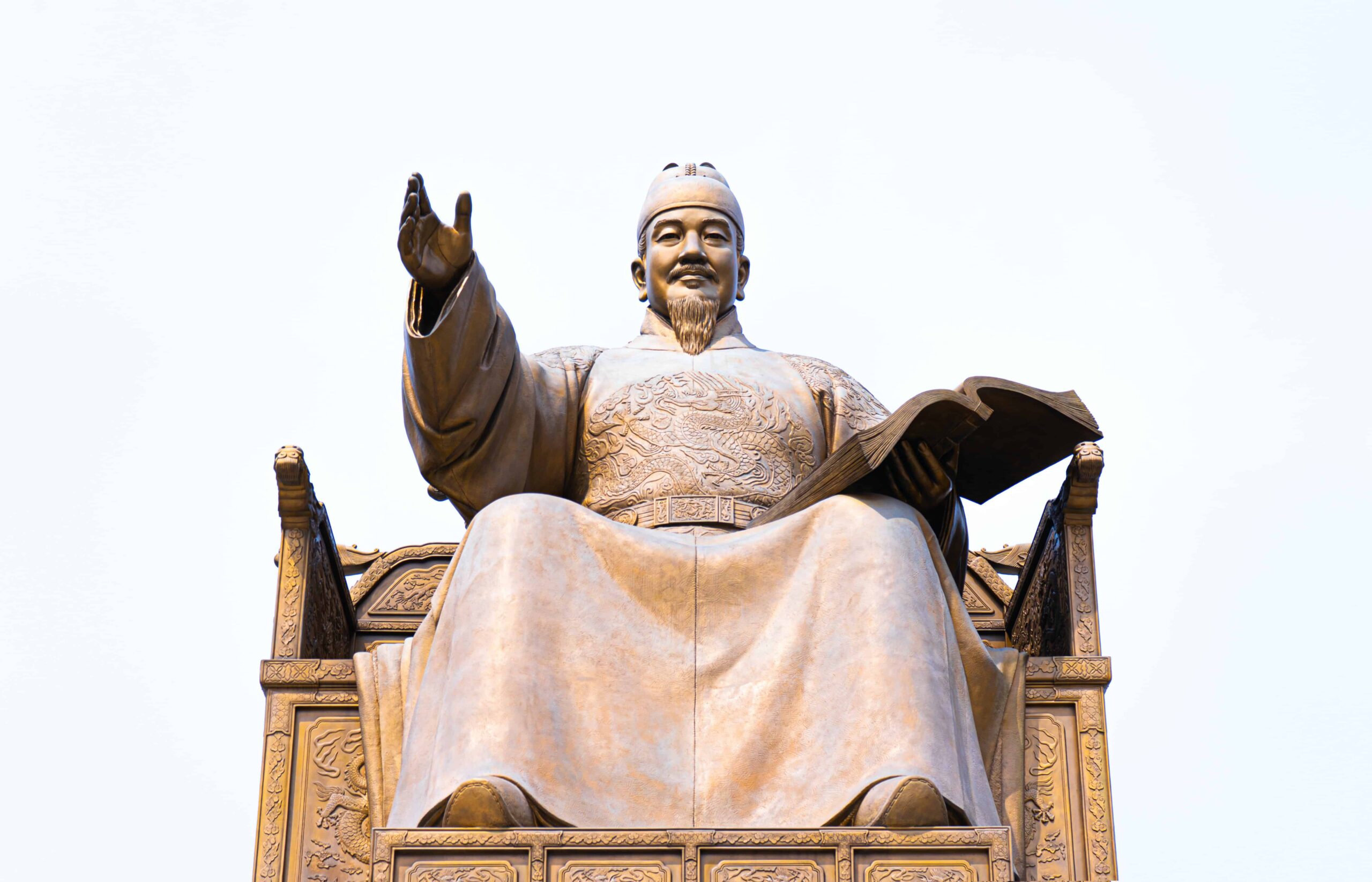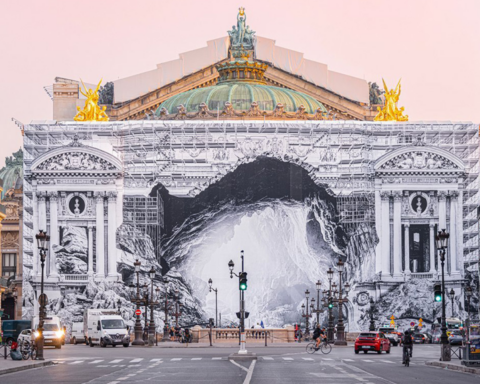[vc_row njt-role=”people-in-the-roles” njt-role-user-roles=”administrator,editor,author,armember”][vc_column][vc_column_text]
As one of the world’s biggest consumers of luxury goods, South Korea is a magnet for luxury brands. Especially as the country has grown exponentially in the space of just 50 years. If its population has managed to emerge from extreme poverty, it is by dint of hard work and a rediscovered pride in its culture, all encouraged by the government.
Let’s continue our exploration of the economy of the Land of the Morning Calm. Having seen the parade of events, the opening of luxury boutiques and the economic miracle, let’s take a look at the levers that have enabled this ‘little country’ to emerge on the international stage.
Following the terrible economic crisis that shook South-East Asia in 1997, the South Korean government decided to change gear, moving away from electronics and towards cultural products, starting with TV series (K Drama) and music (K pop).
The aim was to attract massive amounts of foreign capital. To achieve this, the government will continue to promote the Korean brand through entertainment.
Jurassic Park syndrome
The tool had already served its Japanese neighbour wonderfully in the 1980s, so all that remains is to adapt this “Cool Japan” so Kawai (“cute”, editor’s note) to build a “Cool Korea”. Especially as the consumption of cultural products from the former occupying power was banned from the country for a very long time.
Legend has it that this historic pivot was inspired by… Steven Spielberg, or rather the figures in his blockbuster film Jurassic Park, released in 1993, 4 years before the Asian stock market crash.
In their book K-Pop Soft Power et Culture Globale, sociologists and researchers Vincenzo Cicchelli and Sylvie Octobre call it the “Jurassic Park syndrome”, so revealing was the episode for the government.
On 17 May 1994, the Presidential Advisory Council on Science and Technology presented an opinion entitled “Strategic Plan for the Growth of the High-Tech Visual Arts Industry”. During this meeting, the participants focused on the revenues of the dinosaur film, and with good reason: Jurassic Park, with a budget of 65 million dollars, made 850 million dollars in one year, to the extent that “the film’s revenues are equivalent to the amount represented by the export of 1.5 million vehicles”.
That’s all it takes to convince the government of the power of cultural content. The currency crisis that hit South-East Asia convinced the country to diversify its economy. From now on, in addition to its heavy industry (shipbuilding and car manufacturing, steel and heavy chemicals), the country will produce cultural products.
However, if this reorientation was possible, it was because, as Vincenzo Cicchelli puts it, “modernisation had already taken place, as had the rise in the level of qualifications, while a breeding ground of available creators was already present. You don’t decide to become a creative nation from scratch.
Pascale Elmalan (A.X.I.A.N Partners), a marketing consultant and professor at the Faculty of Pharmacy in Montpellier, cites the example of K-beauty, where Korea was able to benefit from its status as a subcontractor to Japanese manufacturers.
“The country with its Chaebols – powerful global conglomerates such as Samsung, LG and Amore Pacific – was very well equipped in terms of infrastructure. You could say that they were early adopters of the start-up culture – and its ‘fail fast’, according to which early failure is essential to any success.”
Secondly, according to Joëlle Montgolfier (Bain), the extreme poverty and political tensions to which its population has been exposed have led to the emergence of “extremely hard-working individuals from an early age”.
According to Pascale Elmalan (A.X.I.A.N Partners), “In Korea, there is the idea that we are stronger together. The prestigious Joseon dynasty shaped the country and its culture before being invaded by Japan and partitioned. Following the example of the 996 rule that sets the pace for working days in China (9am to 9pm, six days a week), they all got together and worked 69-hour weeks to rebuild the country.
The Han River Miracle
In Asia, this economic comeback is known as the “Han River Miracle”, named after the 514km-long river that flows through the capital Seoul. Indeed, how did the country manage to turn its economy around in such a short space of time when most of its productive apparatus had been destroyed by the Korean War (1950-1953)?
It has to be said that the country is a master in the art of adaptation, especially since King Sejong the Great, fourth king of the prestigious Joseon dynasty (reigned from 1418 to 1450) decreed the introduction of Hunminjeongeum or “the correct sounds for the education of the people”, which gave rise to Hangeul, the national language. This alphabet was created from scratch to replace the Chinese writing system, which was considered too complex.
From the 1960s onwards, the country relied on exports and American financial aid to pull itself out of the crisis. In the 1970s, South Korea became a major player in the heavy chemicals industry, while the 1988 Olympic Games in Seoul provided the impetus needed for the country’s recovery. The Western media began to take a new look at South Korea, referring to it as one of Asia’s Four Dragons (alongside Taiwan, Hong Kong and Singapore).
In 1996, South Korea became the 29th country to join the OECD. Korean exports rose from $32.82 million in the 1960s to over $10 billion in the 1970s, before reaching $542.2 billion in 2019.
Similarly, during the crisis of November 1997, the government made the radical decision not only to restructure its industry but also to withdraw insolvent companies from the market. In just 2 years, South Korea returned to its previous levels of growth rates and prices, as well as achieving a current account surplus.
Korean society has retained some of the stigma of this economic miracle, such as hyper-competition, a taste for effort and work as a virtue.
So much so that the country’s education system has topped the PISA rankings since the very first edition in 2000.
But this desire for perfection comes at a price: the country has one of the highest suicide rates in the world. The rate is 25.8 per 100,000 people (compared with 13.1 in France), or almost thirty-six suicides every day.
A bridgehead in Asia
If the luxury goods industry is increasingly interested in the Korean market, it is precisely because of its cultural products, which are made locally but have a transnational resonance.
The aim is not simply to appeal to the domestic Korean market, but to capitalise on the appeal of Korean culture in neighbouring countries such as Indonesia, Vietnam, Malaysia and Thailand.
For Pascale Elmalan, the Korean market acts as a “bridgehead in Asia, both in terms of innovation and culture”, particularly in South-East Asia and – to a lesser extent – in the Middle East.
Joëlle de Montgolfier (Bain) confirms: “The market is likely to perform rather well in 2022, due to two key factors. Firstly, the influx of tourists, which enables us to reach a large number of consumers in a short space of time, and secondly, a population with an extremely high disposable income.”
With regard to the latter, the confinements have worked in favour of hoarding, i.e. as much income available for the purchase of luxury products.
The CEO of SG Entertainment, Thomas Sommer, agrees with this “multiplier effect” that we have already seen in the Middle Kingdom: “Korea is already very receptive to luxury and its market is almost saturated. In China, only 5% of the population consumes luxury goods, i.e. 70 million people out of 1.4 billion. This already represents a sizeable market for luxury brands, and one that is only set to expand with the country’s reservoir of economic development and its policy of moving upmarket.”
Featured photo : © Press [/vc_column_text][/vc_column][/vc_row][vc_row njt-role=”not-logged-in”][vc_column][vc_column_text]
As one of the world’s biggest consumers of luxury goods, South Korea is a magnet for luxury brands. Especially as the country has grown exponentially in the space of just 50 years. If its population has managed to emerge from extreme poverty, it is by dint of hard work and a rediscovered pride in its culture, all encouraged by the government.
Let’s continue our exploration of the economy of the Land of the Morning Calm. Having seen the parade of events, the opening of luxury boutiques and the economic miracle, let’s take a look at the levers that have enabled this ‘little country’ to emerge on the international stage.
Following the terrible economic crisis that shook South-East Asia in 1997, the South Korean government decided to change gear, moving away from electronics and towards cultural products, starting with TV series (K Drama) and music (K pop).
The aim was to attract massive amounts of foreign capital. To achieve this, the government will continue to promote the Korean brand through entertainment.
Jurassic Park syndrome
The tool had already served its Japanese neighbour wonderfully in the 1980s, so all that remains is to adapt this “Cool Japan” so Kawai (“cute”, editor’s note) to build a “Cool Korea”. Especially as the consumption of cultural products from the former occupying power was banned from the country for a very long time.
Legend has it that this historic pivot was inspired by… Steven Spielberg, or rather the figures in his blockbuster film Jurassic Park, released in 1993, 4 years before the Asian stock market crash.
In their book K-Pop Soft Power et Culture Globale, sociologists and researchers Vincenzo Cicchelli and Sylvie Octobre call it the “Jurassic Park syndrome”, so revealing was the episode for the government.
On 17 May 1994, the Presidential Advisory Council on Science and Technology presented an opinion entitled “Strategic Plan for the Growth of the High-Tech Visual Arts Industry”. During this meeting, the participants focused on the revenues of the dinosaur film, and with good reason: Jurassic Park, with a budget of 65 million dollars, made 850 million dollars in one year, to the extent that “the film’s revenues are equivalent to the amount represented by the export of 1.5 million vehicles”.
That’s all it takes to convince the government of the power of cultural content. The currency crisis that hit South-East Asia convinced the country to diversify its economy. From now on, in addition to its heavy industry (shipbuilding and car manufacturing, steel and heavy chemicals), the country will produce cultural products.
However, if this reorientation was possible, it was because, as Vincenzo Cicchelli puts it, “modernisation had already taken place, as had the rise in the level of qualifications, while a breeding ground of available creators was already present. You don’t decide to become a creative nation from scratch.
Pascale Elmalan (A.X.I.A.N Partners), a marketing consultant and professor at the Faculty of Pharmacy in Montpellier, cites the example of K-beauty, where Korea was able to benefit from its status as a subcontractor to Japanese manufacturers.
“The country with its Chaebols – powerful global conglomerates such as Samsung, LG and Amore Pacific – was very well equipped in terms of infrastructure. You could say that they were early adopters of the start-up culture – and its ‘fail fast’, according to which early failure is essential to any success.”
Secondly, according to Joëlle Montgolfier (Bain), the extreme poverty and political tensions to which its population has been exposed have led to the emergence of “extremely hard-working individuals from an early age”.
According to Pascale Elmalan (A.X.I.A.N Partners), “In Korea, there is the idea that we are stronger together. The prestigious Joseon dynasty shaped the country and its culture before being invaded by Japan and partitioned. Following the example of the 996 rule that sets the pace for working days in China (9am to 9pm, six days a week), they all got together and worked 69-hour weeks to rebuild the country.
The Han River Miracle
In Asia, this economic comeback is known as the “Han River Miracle”, named after the 514km-long river that flows through the capital Seoul. Indeed, how did the country manage to turn its economy around in such a short space of time when most of its productive apparatus had been destroyed by the Korean War (1950-1953)?
[…][/vc_column_text][vc_cta h2=”This article is reserved for subscribers.” h2_font_container=”tag:h2|font_size:16|text_align:left” h2_use_theme_fonts=”yes” h4=”Subscribe now !” h4_font_container=”tag:h2|font_size:32|text_align:left|line_height:bas” h4_use_theme_fonts=”yes” txt_align=”center” color=”black” add_button=”right” btn_title=”I SUBSCRIBE !” btn_color=”danger” btn_size=”lg” btn_align=”center” use_custom_fonts_h2=”true” use_custom_fonts_h4=”true” btn_button_block=”true” btn_custom_onclick=”true” btn_link=”url:https%3A%2F%2Fluxus-plus.com%2Fen%2Fsubscriptions-and-newsletter-special-offer-valid-until-september-30-2020-2-2%2F”]Get unlimited access to all articles and live a new reading experience, preview contents, exclusive newsletters…
Already have an account ? Please log in.
[/vc_cta][vc_column_text]Featured photo : © Press[/vc_column_text][/vc_column][/vc_row][vc_row njt-role=”people-in-the-roles” njt-role-user-roles=”subscriber,customer”][vc_column][vc_column_text]
As one of the world’s biggest consumers of luxury goods, South Korea is a magnet for luxury brands. Especially as the country has grown exponentially in the space of just 50 years. If its population has managed to emerge from extreme poverty, it is by dint of hard work and a rediscovered pride in its culture, all encouraged by the government.
Let’s continue our exploration of the economy of the Land of the Morning Calm. Having seen the parade of events, the opening of luxury boutiques and the economic miracle, let’s take a look at the levers that have enabled this ‘little country’ to emerge on the international stage.
Following the terrible economic crisis that shook South-East Asia in 1997, the South Korean government decided to change gear, moving away from electronics and towards cultural products, starting with TV series (K Drama) and music (K pop).
The aim was to attract massive amounts of foreign capital. To achieve this, the government will continue to promote the Korean brand through entertainment.
Jurassic Park syndrome
The tool had already served its Japanese neighbour wonderfully in the 1980s, so all that remains is to adapt this “Cool Japan” so Kawai (“cute”, editor’s note) to build a “Cool Korea”. Especially as the consumption of cultural products from the former occupying power was banned from the country for a very long time.
Legend has it that this historic pivot was inspired by… Steven Spielberg, or rather the figures in his blockbuster film Jurassic Park, released in 1993, 4 years before the Asian stock market crash.
In their book K-Pop Soft Power et Culture Globale, sociologists and researchers Vincenzo Cicchelli and Sylvie Octobre call it the “Jurassic Park syndrome”, so revealing was the episode for the government.
On 17 May 1994, the Presidential Advisory Council on Science and Technology presented an opinion entitled “Strategic Plan for the Growth of the High-Tech Visual Arts Industry”. During this meeting, the participants focused on the revenues of the dinosaur film, and with good reason: Jurassic Park, with a budget of 65 million dollars, made 850 million dollars in one year, to the extent that “the film’s revenues are equivalent to the amount represented by the export of 1.5 million vehicles”.
That’s all it takes to convince the government of the power of cultural content. The currency crisis that hit South-East Asia convinced the country to diversify its economy. From now on, in addition to its heavy industry (shipbuilding and car manufacturing, steel and heavy chemicals), the country will produce cultural products.
However, if this reorientation was possible, it was because, as Vincenzo Cicchelli puts it, “modernisation had already taken place, as had the rise in the level of qualifications, while a breeding ground of available creators was already present. You don’t decide to become a creative nation from scratch.
Pascale Elmalan (A.X.I.A.N Partners), a marketing consultant and professor at the Faculty of Pharmacy in Montpellier, cites the example of K-beauty, where Korea was able to benefit from its status as a subcontractor to Japanese manufacturers.
“The country with its Chaebols – powerful global conglomerates such as Samsung, LG and Amore Pacific – was very well equipped in terms of infrastructure. You could say that they were early adopters of the start-up culture – and its ‘fail fast’, according to which early failure is essential to any success.”
Secondly, according to Joëlle Montgolfier (Bain), the extreme poverty and political tensions to which its population has been exposed have led to the emergence of “extremely hard-working individuals from an early age”.
According to Pascale Elmalan (A.X.I.A.N Partners), “In Korea, there is the idea that we are stronger together. The prestigious Joseon dynasty shaped the country and its culture before being invaded by Japan and partitioned. Following the example of the 996 rule that sets the pace for working days in China (9am to 9pm, six days a week), they all got together and worked 69-hour weeks to rebuild the country.
The Han River Miracle
In Asia, this economic comeback is known as the “Han River Miracle”, named after the 514km-long river that flows through the capital Seoul. Indeed, how did the country manage to turn its economy around in such a short space of time when most of its productive apparatus had been destroyed by the Korean War (1950-1953)?
[…][/vc_column_text][vc_cta h2=”This article is reserved for subscribers.” h2_font_container=”tag:h2|font_size:16|text_align:left” h2_use_theme_fonts=”yes” h4=”Subscribe now !” h4_font_container=”tag:h2|font_size:32|text_align:left|line_height:bas” h4_use_theme_fonts=”yes” txt_align=”center” color=”black” add_button=”right” btn_title=”I SUBSCRIBE !” btn_color=”danger” btn_size=”lg” btn_align=”center” use_custom_fonts_h2=”true” use_custom_fonts_h4=”true” btn_button_block=”true” btn_custom_onclick=”true” btn_link=”url:https%3A%2F%2Fluxus-plus.com%2Fen%2Fsubscriptions-and-newsletter-special-offer-valid-until-september-30-2020-2-2%2F”]Get unlimited access to all articles and live a new reading experience, preview contents, exclusive newsletters…
Already have an account ? Please log in.
[/vc_cta][vc_column_text]Featured photo : © Press [/vc_column_text][/vc_column][/vc_row]










